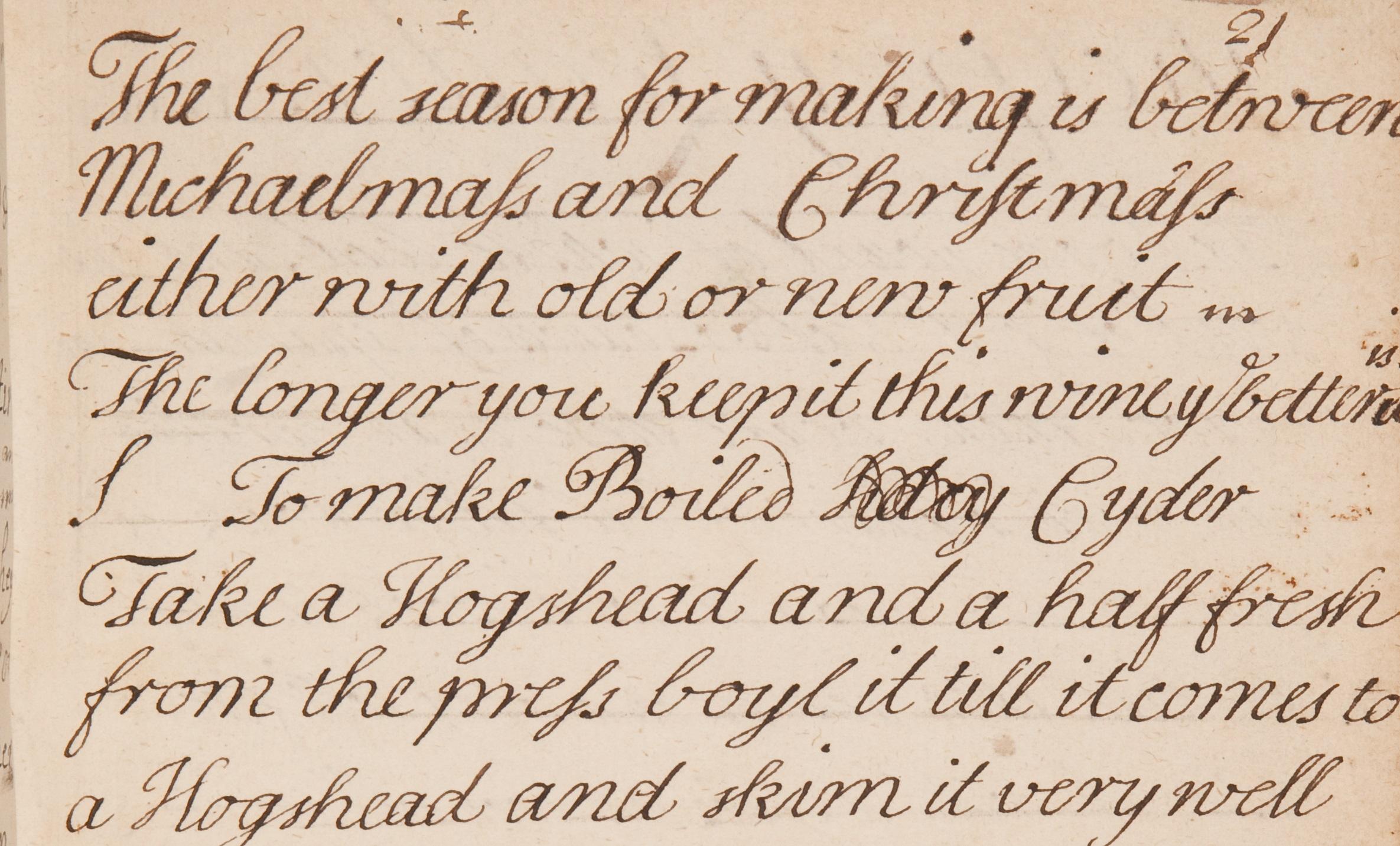Have you selected your Christmas dinner menu? Will you eat traditional turkey and all the trimmings, or something a little different?
We’ve picked out some historical dishes to help inspire your culinary ruminations. Each one features in one of the 17th and 18th-century manuscripts preserved in the RCP archives. The books contain receipts – recipes – for all manner of food and drink as well as for medicinal preparations.
Mince pies are a very popular treat at Christmas time. This recipe dates from sometime between 1650 and 1750, and it shows that mincemeat really did formerly contain meat. The ‘neat’s tongue’ mentioned at the start was a salted or smoked tongue from a cow or an ox: ‘neat’ is an archaic word for a bovine animal
Take a neat’s tongue & parboil it then chop it very small & to two pound of tongue put three pound of beef suet small chopped, four pound & a half of currants washed and picked, a little mace, nutmeg & cinnamon, the peel of 2 lemons minced very small, the juice of 3 squeezed in, 8 pipins [apples] pared & chopped small, 5 or 6 spoonful of vinegar & a pint of canary [wine], sweeten it with sugar to your taste, which must be by warming some over the fire in a porringer, so also for the quantity of spice. Some like candied orange peel and citron cut small and mixed with the rest.

Turkey may not have always been a traditional Christmas meat, but it's very popular today. There are several recipes for the bird in these books, probably intended for eating at any time of year. This version is for a 'smothered' turkey: a whole bird simmered in gravy.
Take a young hen turkey of last year’s late hatch. Take down the breast bone quite as the breast lies in a manner flat to the back. Truss the legs in at the sides (as you would truss a pullet for boiling), only beat or press it down to lie as flat as may be. Put it into a stew pan with so much thin veal gravy as will something more than cover it, & for seasoning throw in an onion that is peeled & 8 or 10 cloves stuck into it. Also put in 2 or 3 blades of large mace, a few corns of whole pepper, sum few bits of the clear fat of bacon cut clean from any rust. So let it boil gently until it is tender.

And now, the smothering starts:
Have in another pan a very strong veal gravy. Take blanched celery cut into small pieces & some pretty big ones. Boil the celery in your rich gravy until fully tender, then have in readiness a lemon all the peel and white cut off. Mince it small then throw it in to have one boil up (but no more with your celery). Warm a side dish & put your turkey in & pour upon it your strong gravy & the celery so as to cover the turkey. Garnish the dish with sliced lemon. So serve it up.
If you need a drink to wash this down, why not try some boiled cider? The recipe notes that ‘the best season for making is between Michaelmas and Christmas’.
Take a hogshead and a half [c80 gallons] fresh from the press. Boil it till it comes to a hogshead and skim it very well then put in of brown yellow sugar 7 or 8 pounds according as your cider is sweet or sharp.
If none of these appeal, maybe there’s something else in the recipe books that will spike your interest. Other dishes described include larks in jelly, crayfish soup, clear quince cakes, bacon omelette, and oyster loaves.
Whatever you decide to have at Christmas this year, we hope that you have an enjoyable and tasty meal.
Katie Birkwood, rare books and special collections librarian
The history of alcohol was explored in depth in our exhibition 'This bewitching poison': alcohol and the Royal College of Physicians, which ran 13 January - 28 July 2014.
Read more about the RCP's library, archive, and museum on our blog, and follow @RCPmuseum on Twitter.
